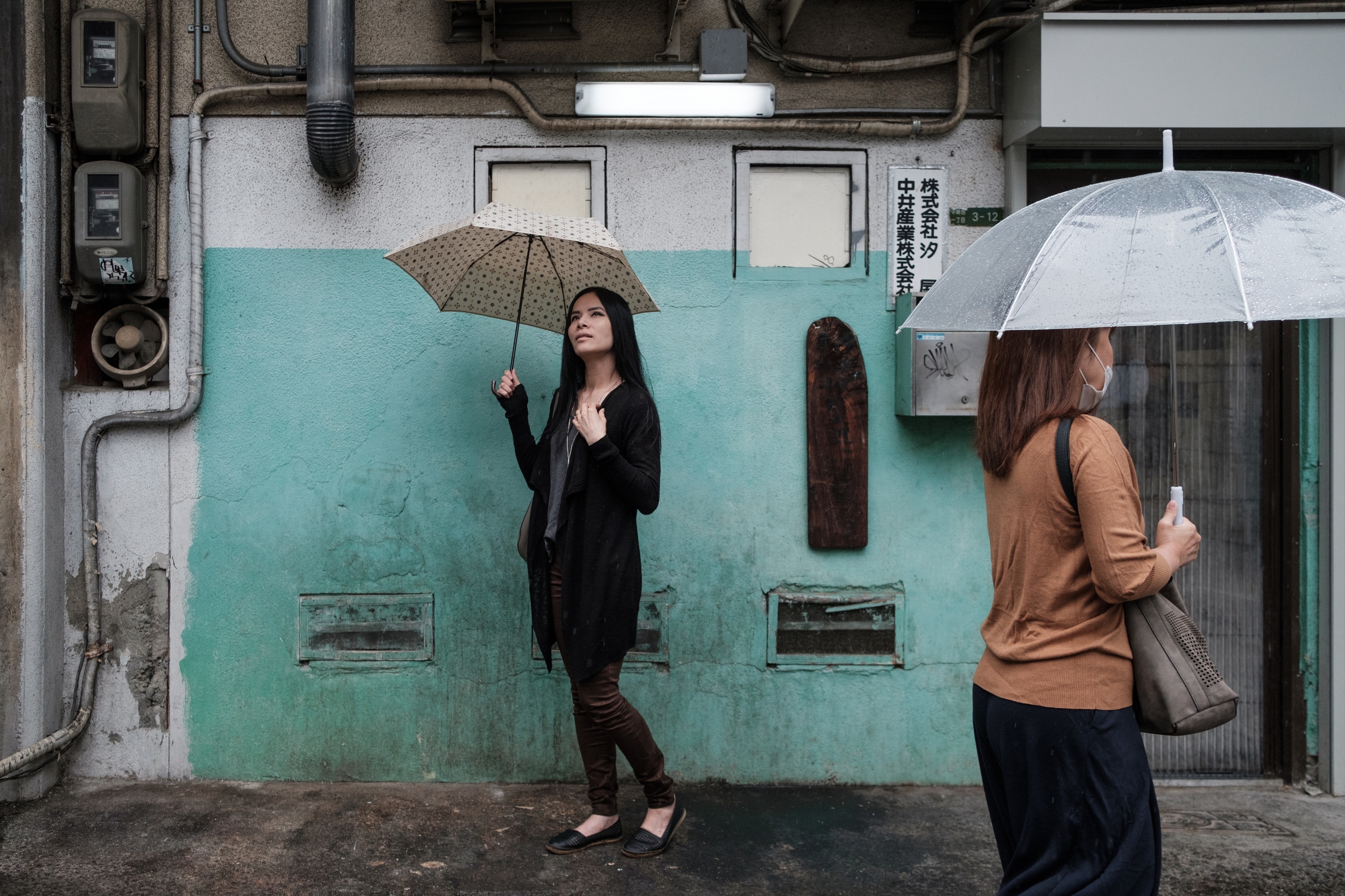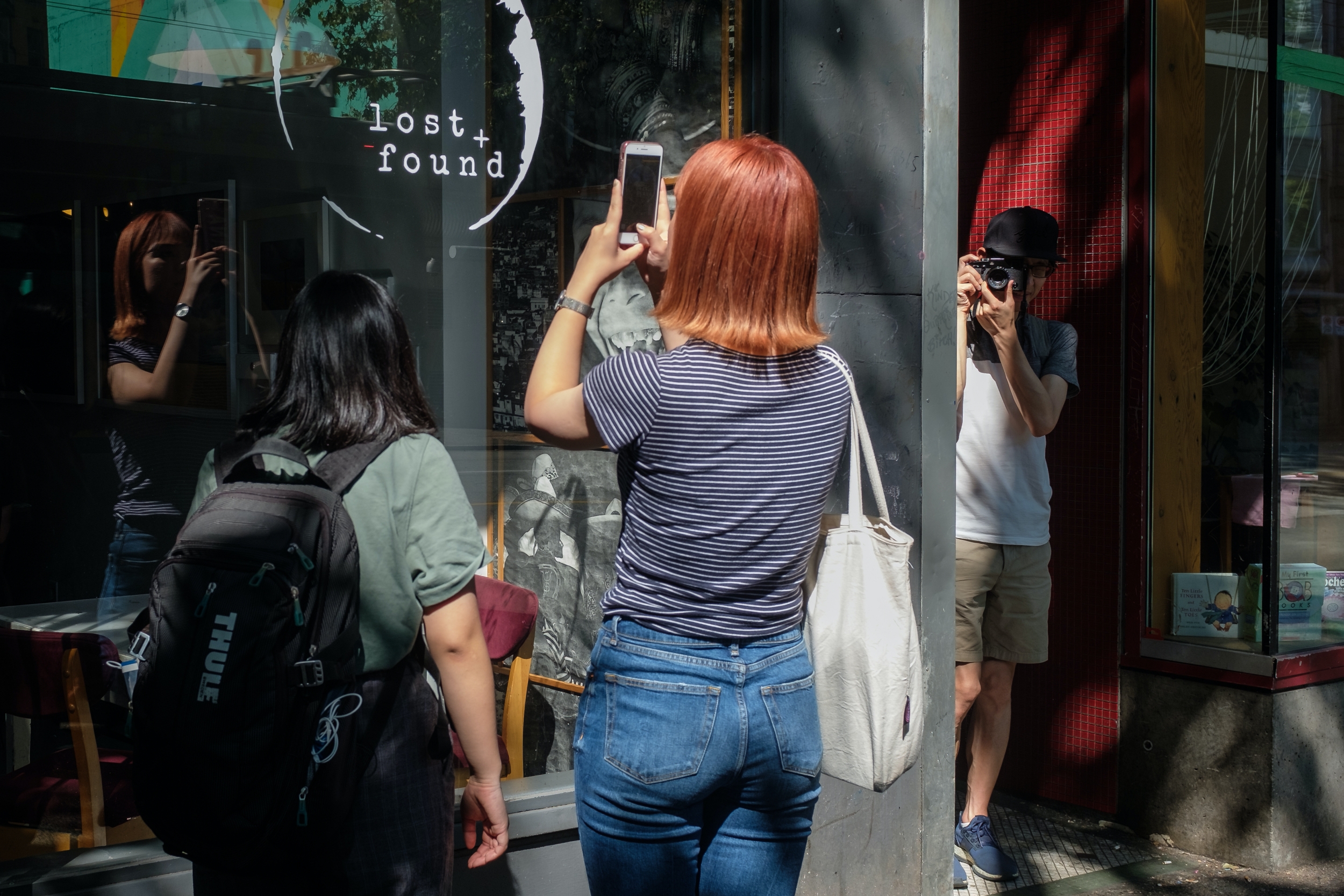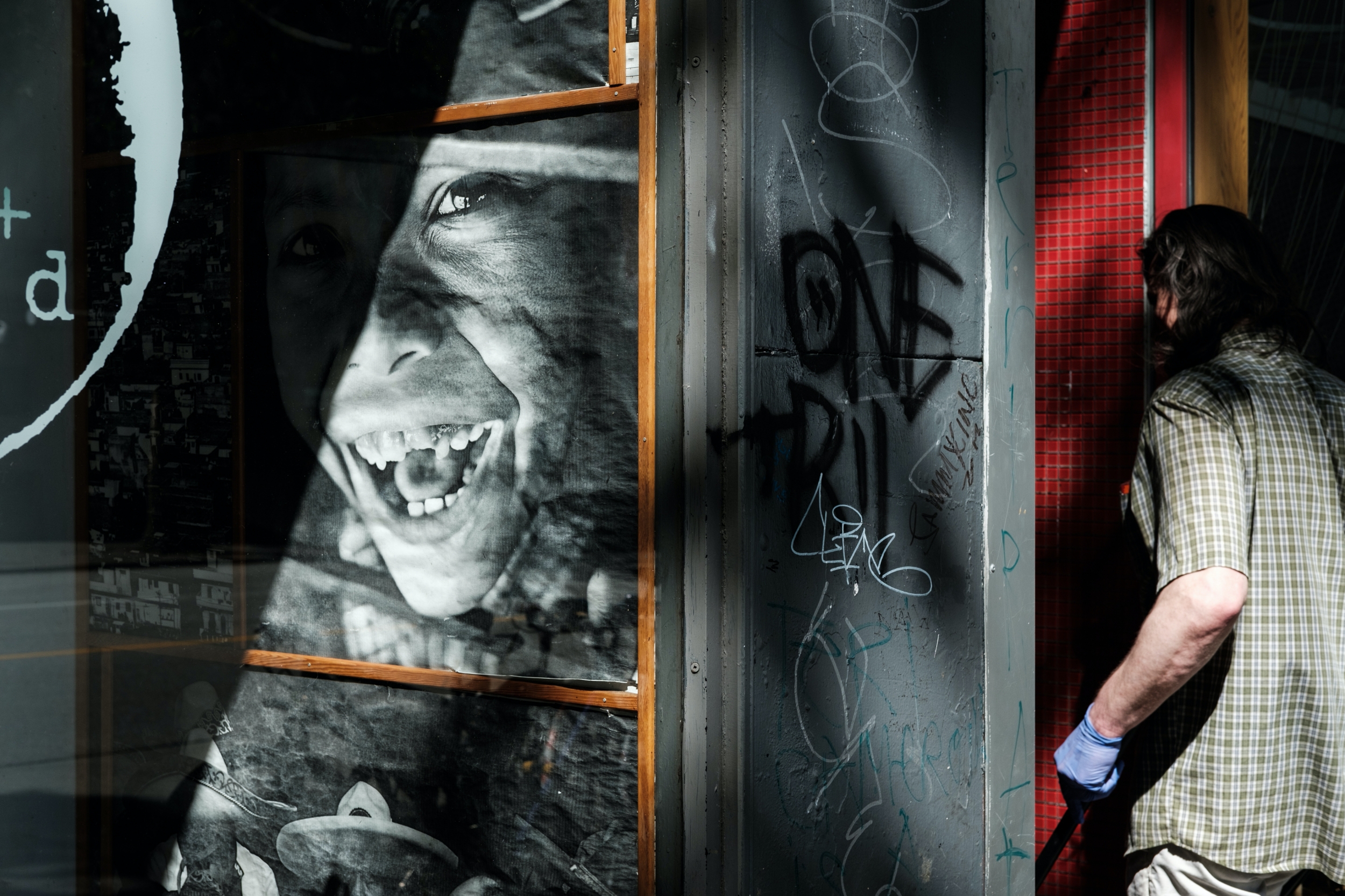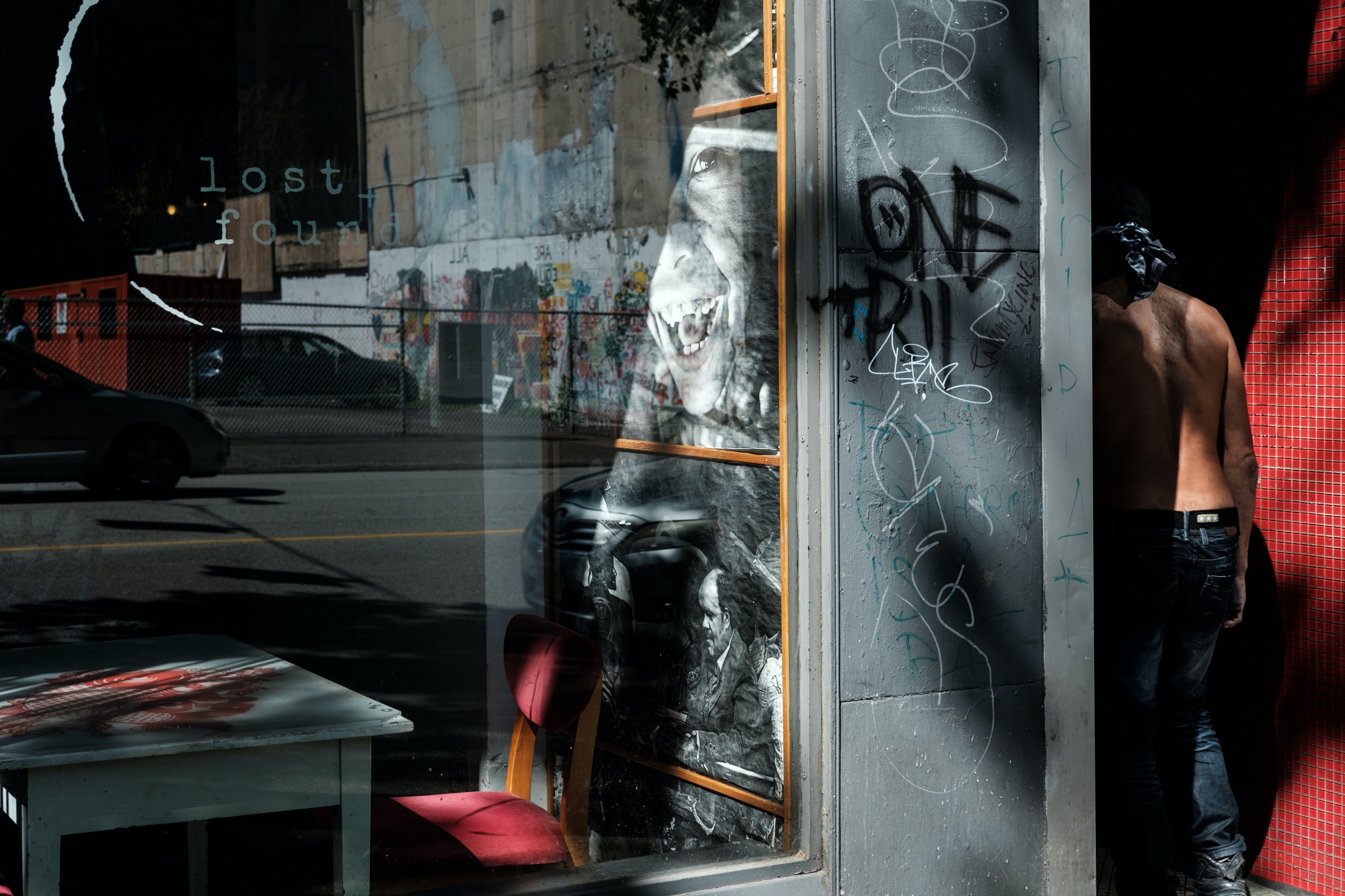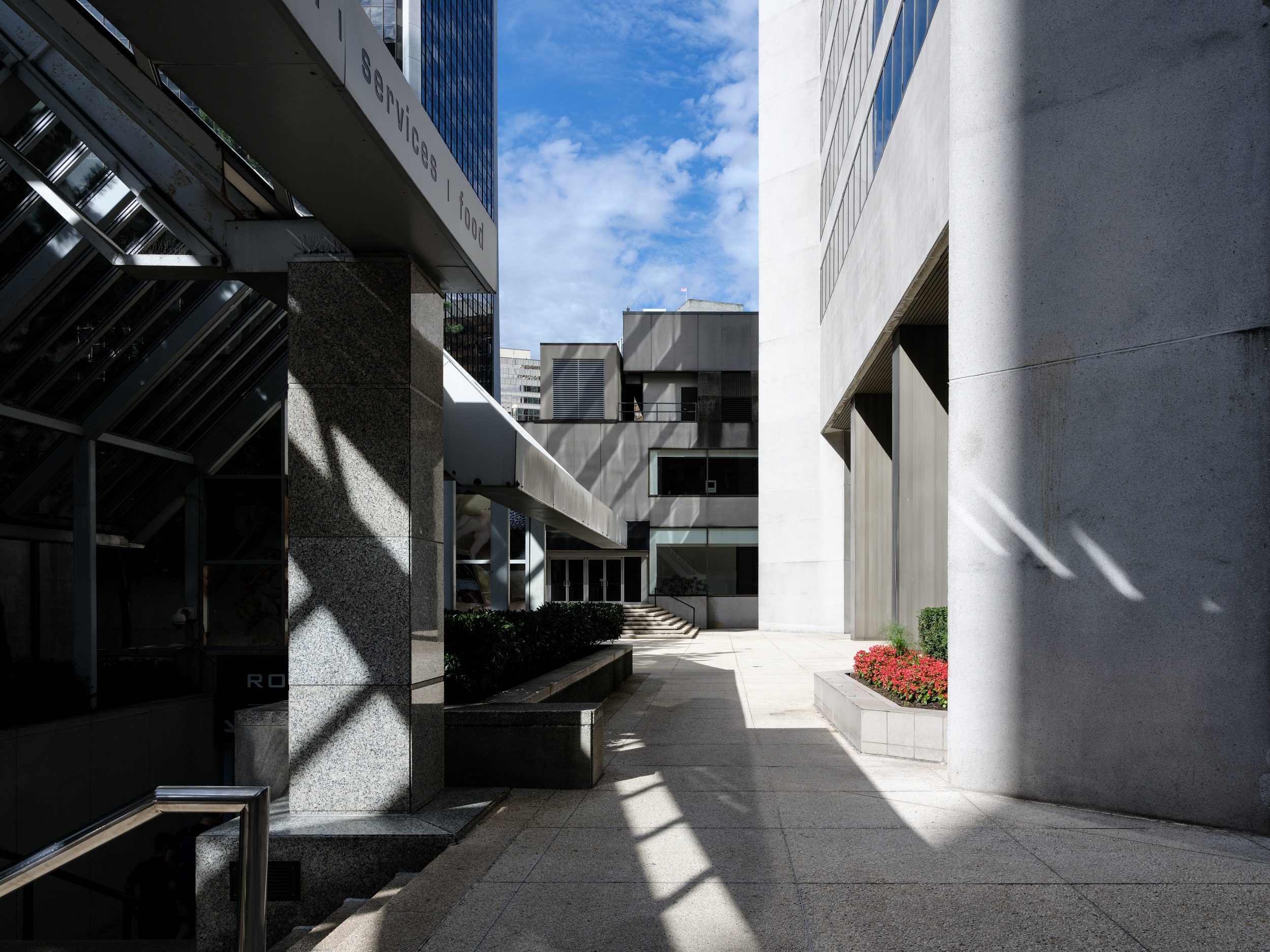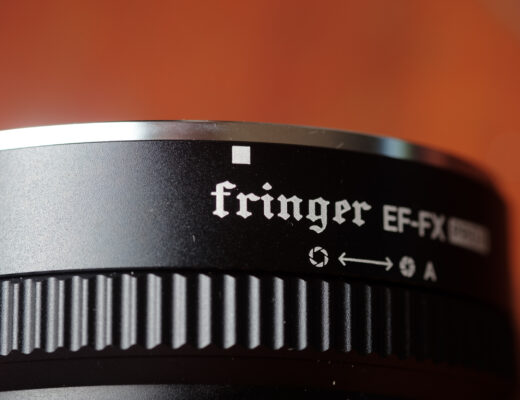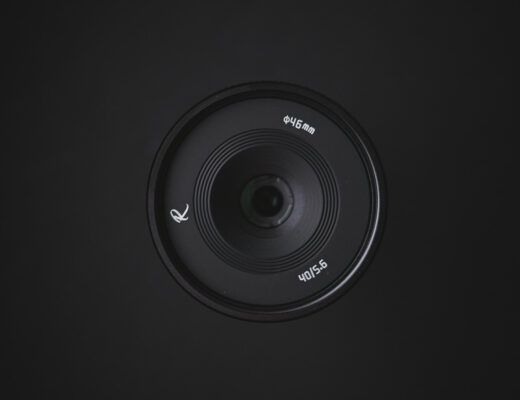Like many photographers, I started off capturing family portraits and landscapes long before I ever ventured down the rabbit hole that is street photography. When we’re honing in our skills with subjects that don’t move -people, trees, buildings- we spend more time on composition and framing. This is why a tripod is a good tool to use when pursuing styles of photography where the composition of our images are essential. Since I started my photographic career with a tripod, I’ve always considered composition as a key element to my street photography. Some may believe that focusing on people is the key to a solid street photograph. Although there are many components that make for a great photograph, we should view composition as an elemental skill, even for our street photography. Allow me to explain.
Many assume the first step to good street photography is to search for interesting people. It’s true that for most styles of street photography we need some human element embedded in the frame; but more important than people is how they are composed within the frame of our image. Although we may not be able to direct people to where we want them to be, we can stand at just the right spot so people are walking through, around or towards an interesting frame that we have selected. The more time we invest on our compositional skills, the more interesting our street photographs will become.
The first thing I look for when planning a street photograph is an interesting background: an old building, a doorway, store front signage, dramatic lighting against a wall, etc. Once I find some place interesting, I’ll spend time figuring out the right place to stand and take some test shots. I don’t care if there’s any people in the image yet; but this stage allows me to fine tune the composition, framing, exposure, white balance etc. Even better, if I have someone with me, I will often ask them to stand in the exact spot where I would want someone to be and take a faux street photo (technically this style of photography is called a photographic tableaux). Finally, I sit and wait for someone to walk into the exact spot where I want them to be. Let’s look at a series of photographs that shows each step of this process.

Step 1: find an interesting scene and figure out your composition. I decided to go portrait versus landscape because of the window above. Take a test shot without anyone in the image. At this stage you are fine-tuning your composition, framing, exposure, white balance, etc.
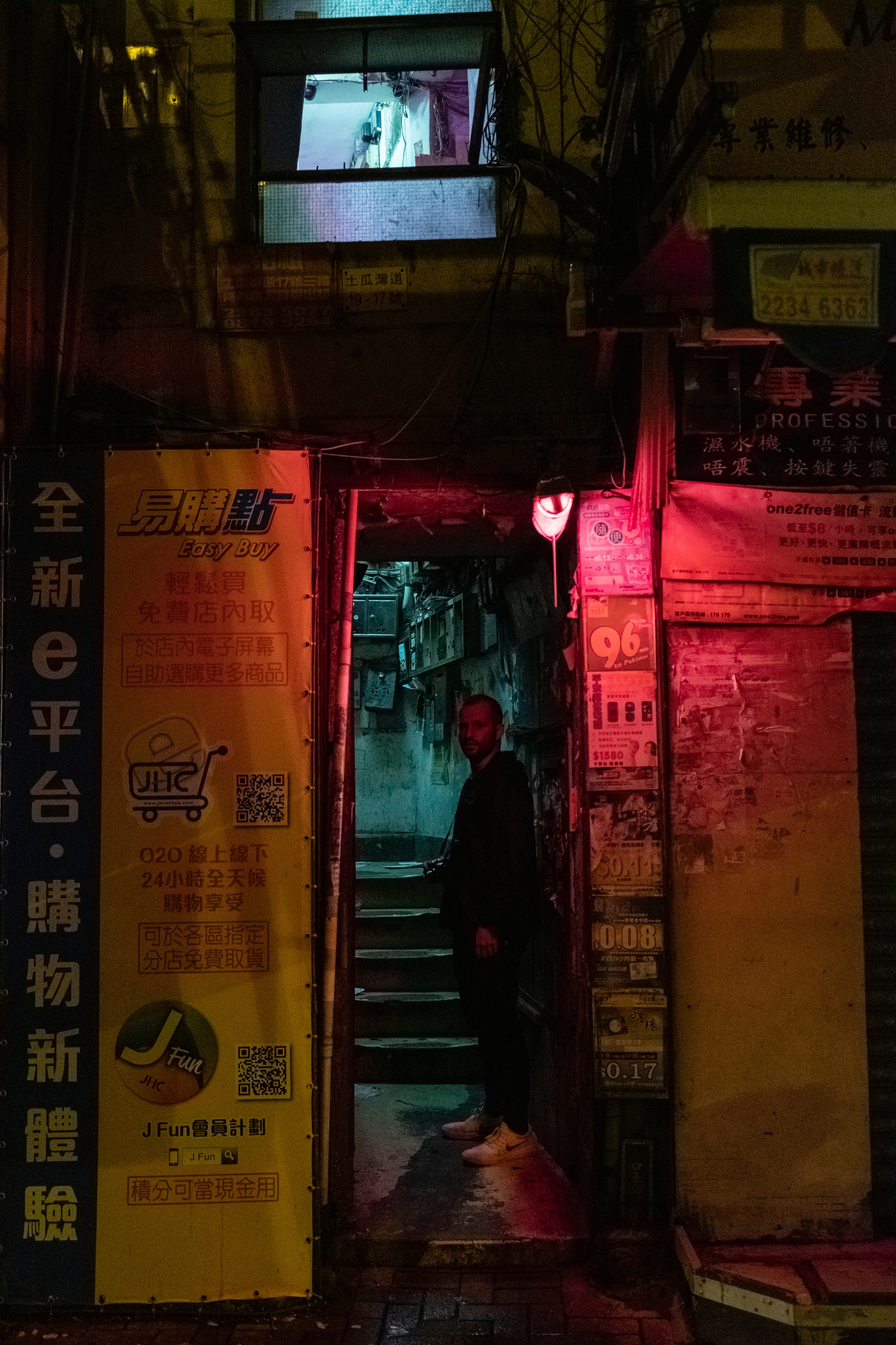
Step 2: If you have someone with you, ask them to stand in the spot where you would like a random person to be. This helps to see if the image works, as well as to see the lighting at that spot. For this scene I asked my videographer @ChrismeetsChris to pose for me. I decided the lighting looked best at the entrance
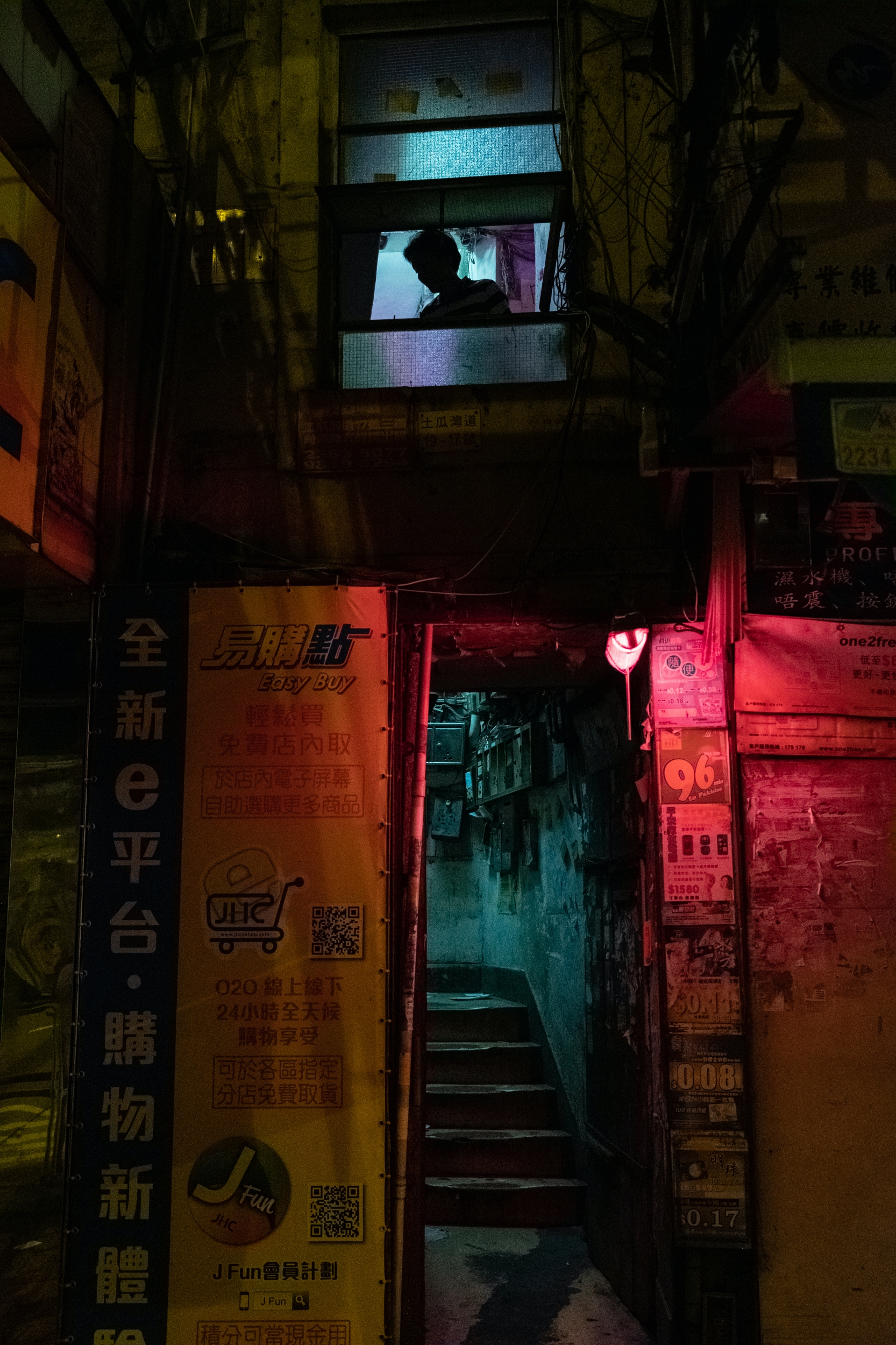
Step 3: Wait patiently. Someone appeared in the upstairs window, which is part of the stairwell. I was able to take two images before they disappeared down the stairs.
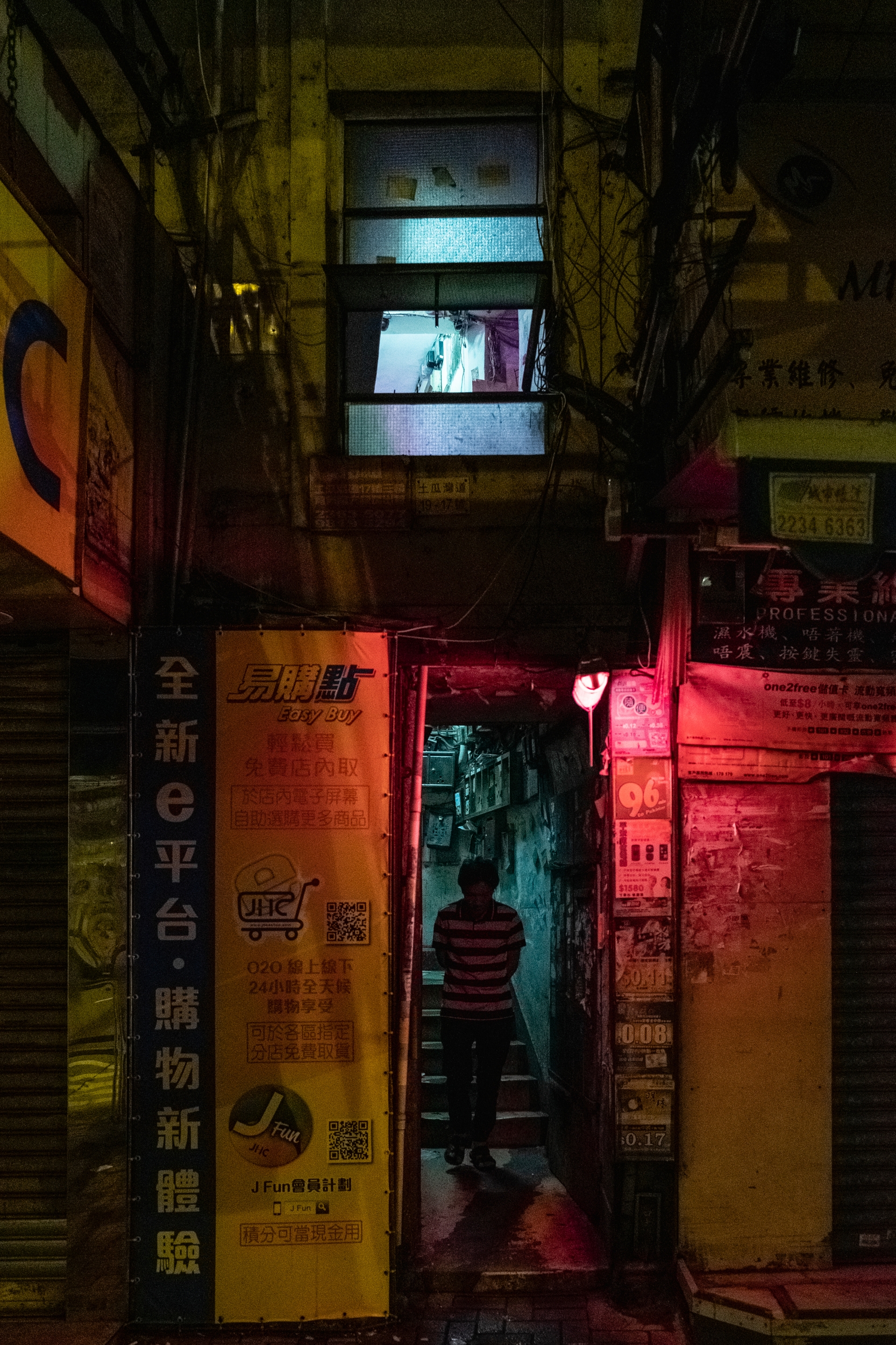
Step 4: patiently wait for your subject to hit the spot you know has the best lighting. Although I like this image, I knew he had to take a couple more steps for the light to hit his face
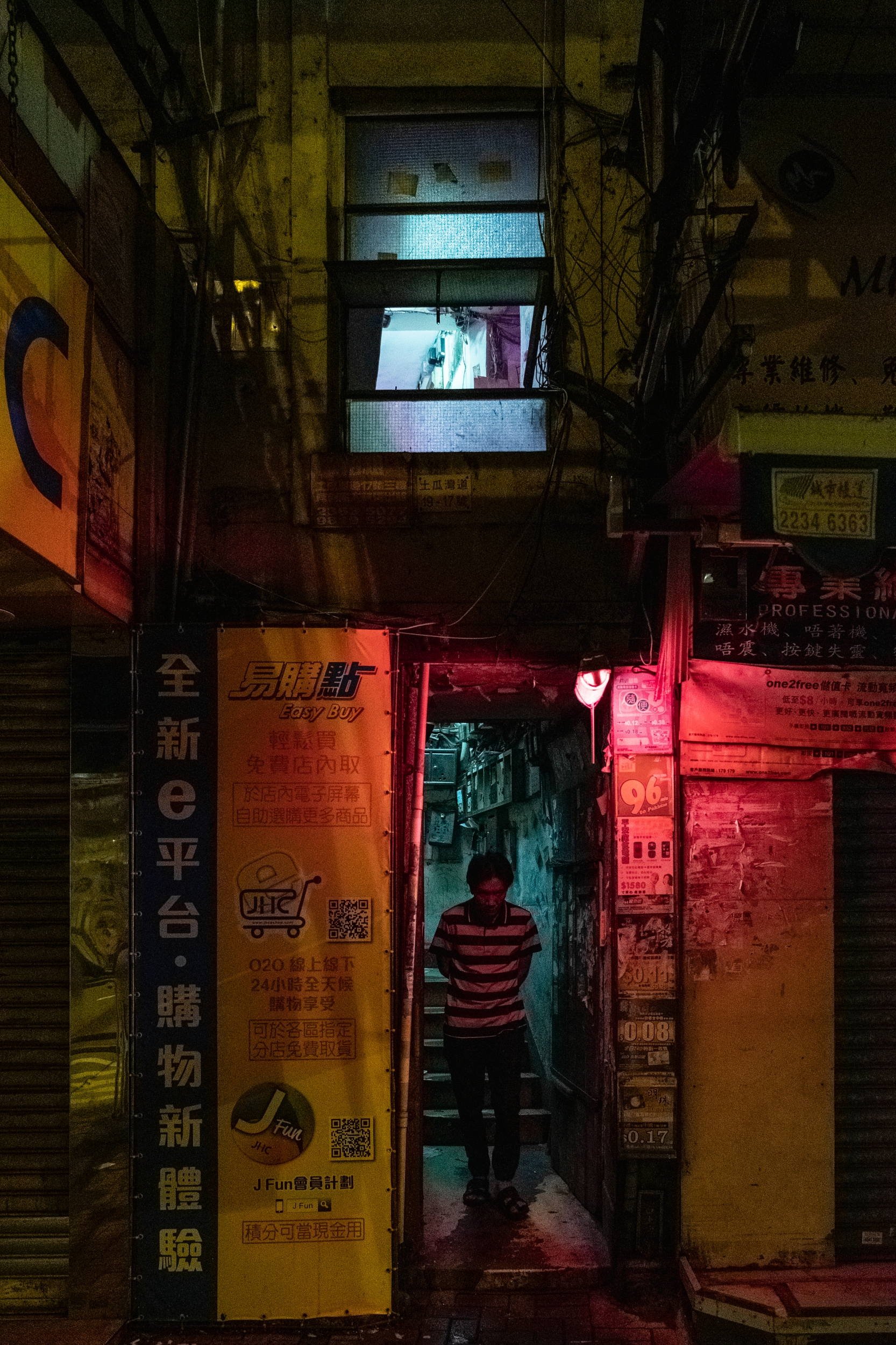
Step 5: finally the subject is standing exactly where I knew the light would hit his face. I successfully captured what I wanted. Fujifilm X-H1 + XF18-55mm f/2.8-4 R OIS at 18mm. 1/125th sec f/3.2 @ ISO 3200
Let’s review the above images. The first step is to find an interesting scene that will become the first building block of your image. Next, work out your composition and framing. Because of the window above, I decided to frame this image vertically. I hoped to capture someone in the upper window as well as someone walking through the doorway. Because my videographer was with me, I asked him to stand at the entrance so I could see what the lighting would be like. He moved to various spots in the stairwell, but right at the entrance was the best spot. I took a decent street portrait of my videographer, but I wanted a ‘proper’ street photo with a random person walking into my image. This is where patience is involved. I rarely chase my subjects. I find a spot I like to photograph, frame it up and then wait. A few minutes later someone came down the stairs and I was able to get the exact image I was looking for. Let’s look at another series of photographs and walk through the process again.

Step 1: find an interesting scene. I’ve walked past this coffee shop many times and liked the way the sun hit the images inside the window as well as the red wall to the right. I placed my colleague @CafeYVR in the image to see what the lighting would be like in the corner, as well as work out the composition
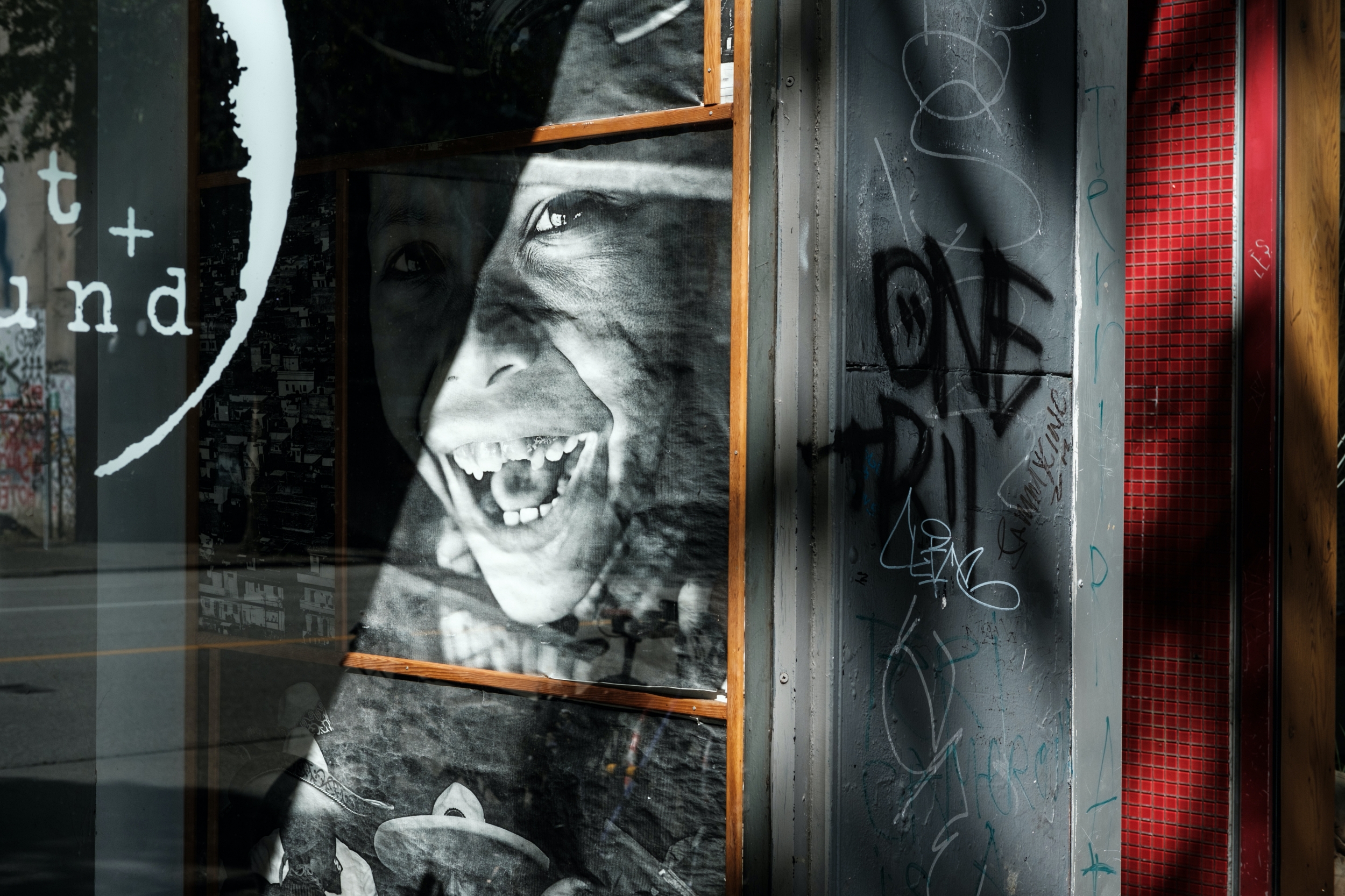
Step 2: I came back another day knowing the light would be perfect at this time. As per usual I took a test shot to make sure the composition and framing worked. The light still looked good in that corner by the red wall.
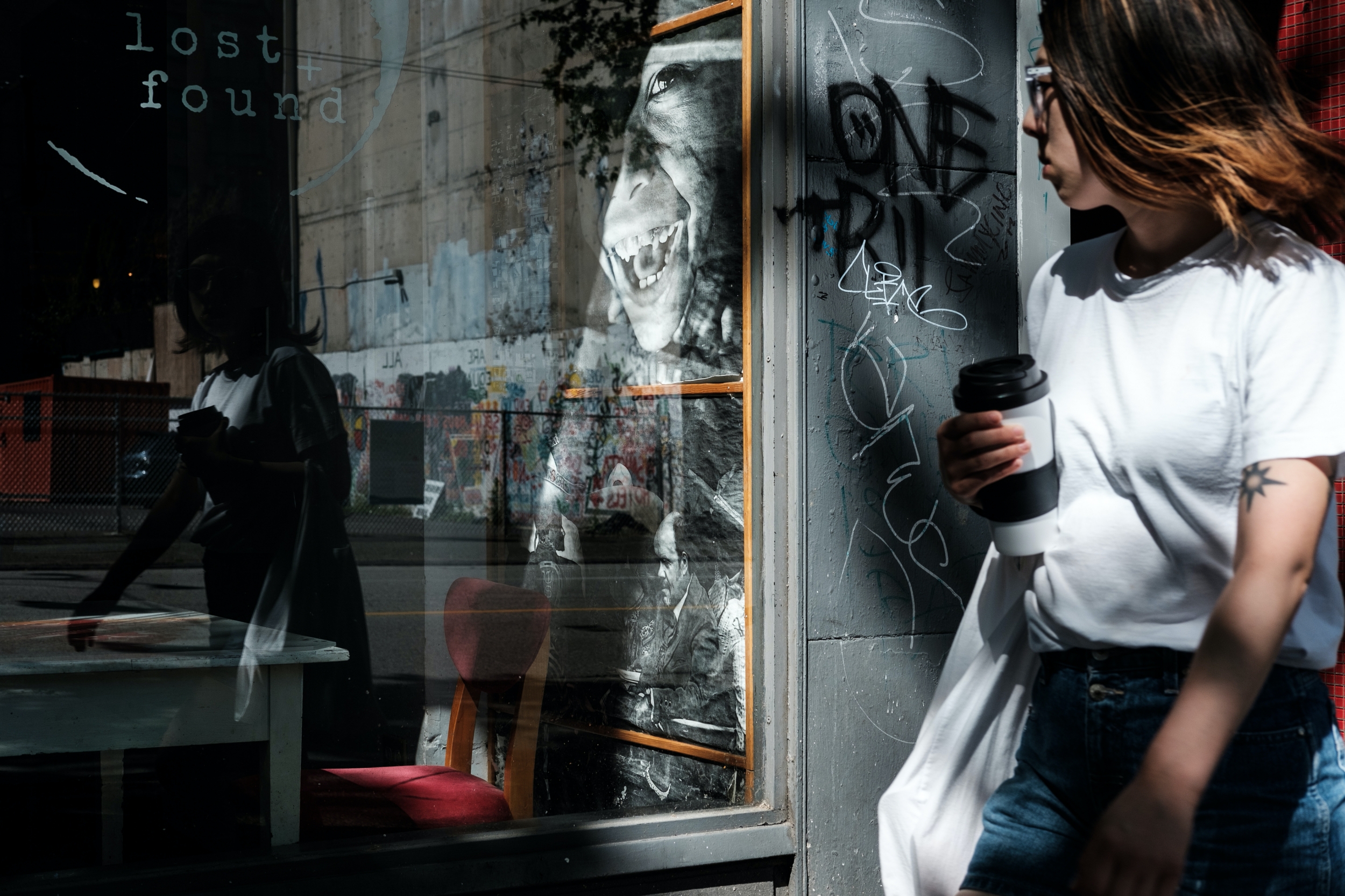
Step 3: I waited for people to cross the frame but realized I was standing too close. Instead of stepping back and recomposing, I decided to not photograph people crossing the frame. Instead I waited for people to walk past the red wall

Step 5: keep shooting. Don’t stop and chimp. You know the framing, composition and exposure are all good. Focus on capturing what’s in front of you. Fujifilm X-T2 + XF35mm f/2 R WR
From the above series of images from this location, my landscape photography background helped. Knowing you have a great scene and returning when you know the lighting will be ideal is what many landscape photographers do. Many return to the same location year after year trying to get the perfect photo. Having a regular street photography route where you walk the same streets on a weekly, monthly or yearly basis can help you know where to take the best photos at a specific time of day and ideal time of year. Because each time you pass by will have different people, you never know what you’ll capture. Here is another series of photographs, this time along a pier at night.

Step 1: find an interesting scene. Compose and frame. I really liked the crab fisherman hunched down to the right with his head lamp, but the middle of the frame was empty. I decided to wait for some people to walk into my frame.
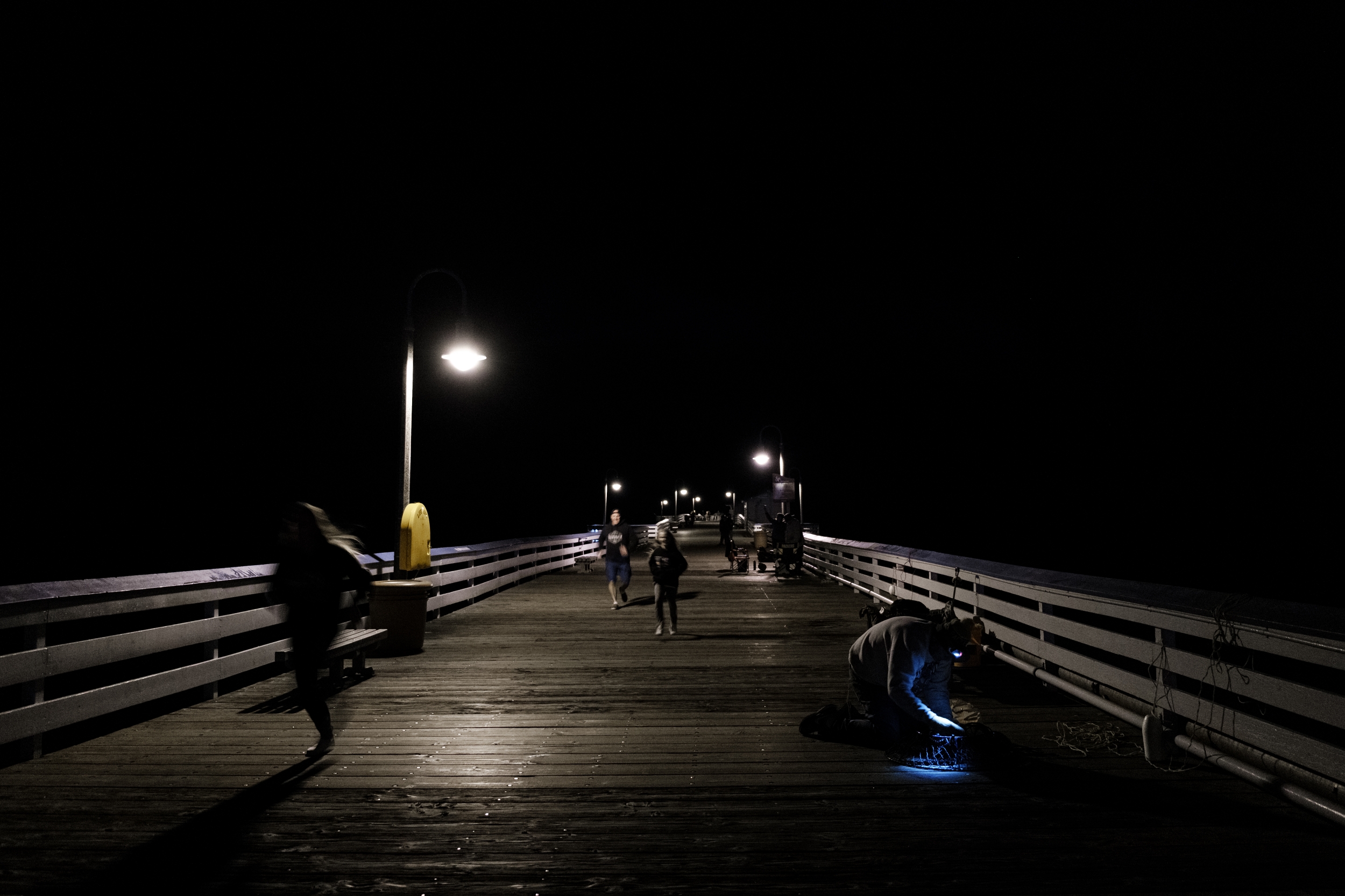
Step 2: I was lucky as the kids started sprinting past me. Because I was already standing and waiting, all I had to do was press my shutter button. I manually focused on the fisherman so I didn’t have to worry about focusing. Fujifilm X-T2 + XF18-55mm f/2.8-4 R OIS at 18mm f/2.8 1/15th sec ISO 3200

Step 3: keep shooting and don’t chimp. Practice holding your camera steady while you try and time the movement of your subjects.
From this series of images, you can see the benefit of finding the right scene and composing before deciding to focus on people. I found the crab fisherman interesting, but I needed to have some movement down the middle of the pier. I made sure the composition was balanced, the exposure was correct and I was standing at the right spot before the action happened. I knew people were walking down the pier towards me but I wasn’t concerned about them yet. As long as I had my composition and framing correct, the randomness of people moving through my image would work out on its own. It was perfect when the kids ran past me, perhaps in an attempt to get out of my way for my photograph, I don’t know. Either way, I was ready. My focus was locked onto the fisherman and I stood there steady and confident. I knew if I was patient I would eventually get the image I wanted.
Moreover, my early years practicing my portraiture and landscape photography has influenced the way I approach my street photography. I prioritize my composition above all else. Framing can even be done in post with creative cropping (I often change my images to 16:9); but I am always aware of how I want to frame my images before hand. If you have a friend with you, ask if they can help by standing where you predict someone will walk into your frame. Once you’ve decided on your composition, make sure your exposure, white balance and focus is what you want. Take a test shot and analyze it. Once you’re confident you have what you want, be patient. Wait for people to walk into your frame, don’t go chasing people. For me, street photography is like fishing. Once you find your ideal spot, you have to sit and wait. If nothing happens, that’s okay, come back another time or move to a new spot and repeat the same process. Although the beauty of street photography is the randomness and serendipity of it; there are some elements you can control, composition being the most important. Please don’t leave that to chance. Thanks for reading FujiLovers and happy shooting!!


